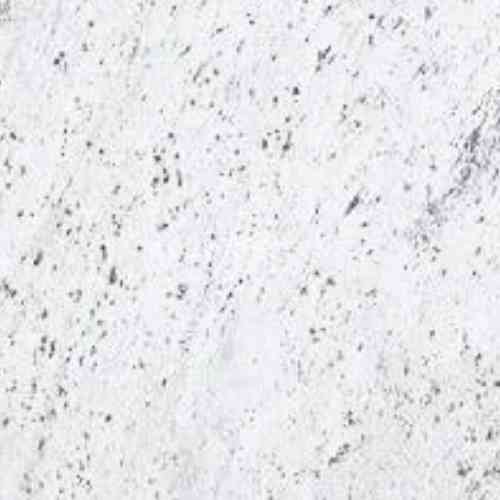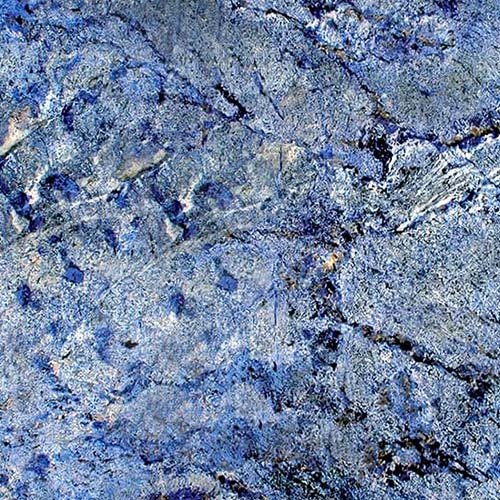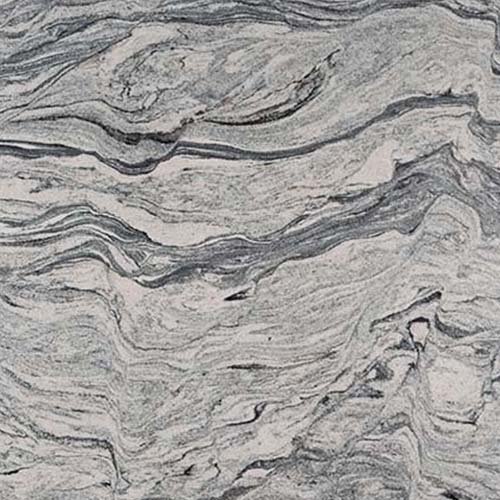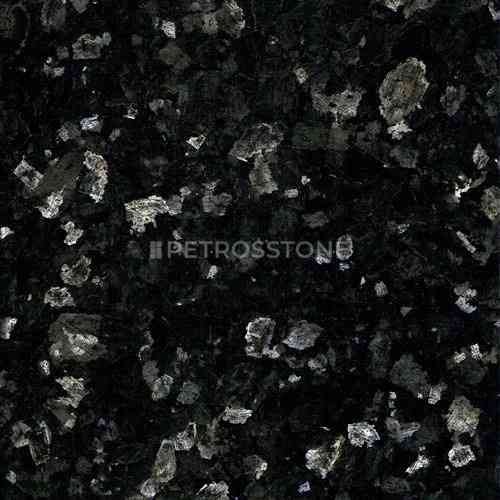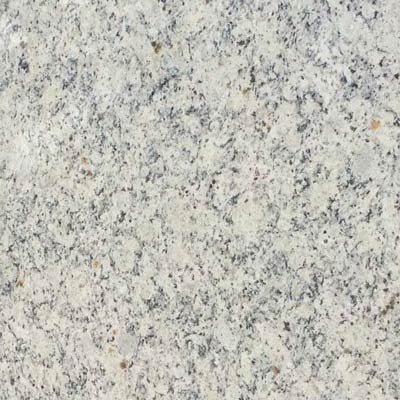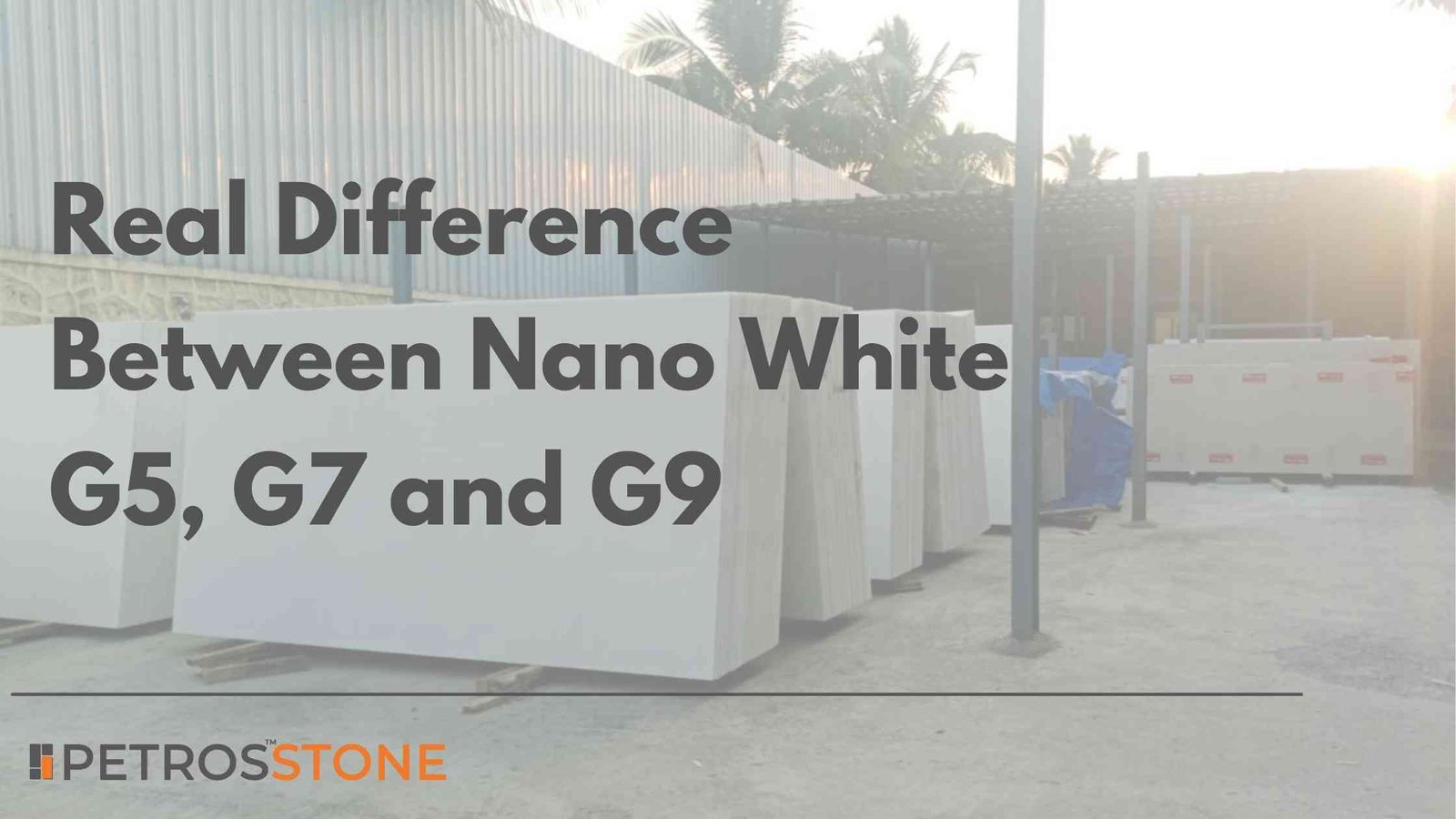
Nano White has become popular in modern interiors, particularly for kitchen countertops, walls, and flooring. Despite its appearance, Nano White is not a natural stone but an artificial glass-based material. Known for its elegance, durability, and clean aesthetic, Nano White has various grades, including G5, G7, and G9. This article explores the differences between these grades, their applications, and why Nano White is a preferred choice in design.
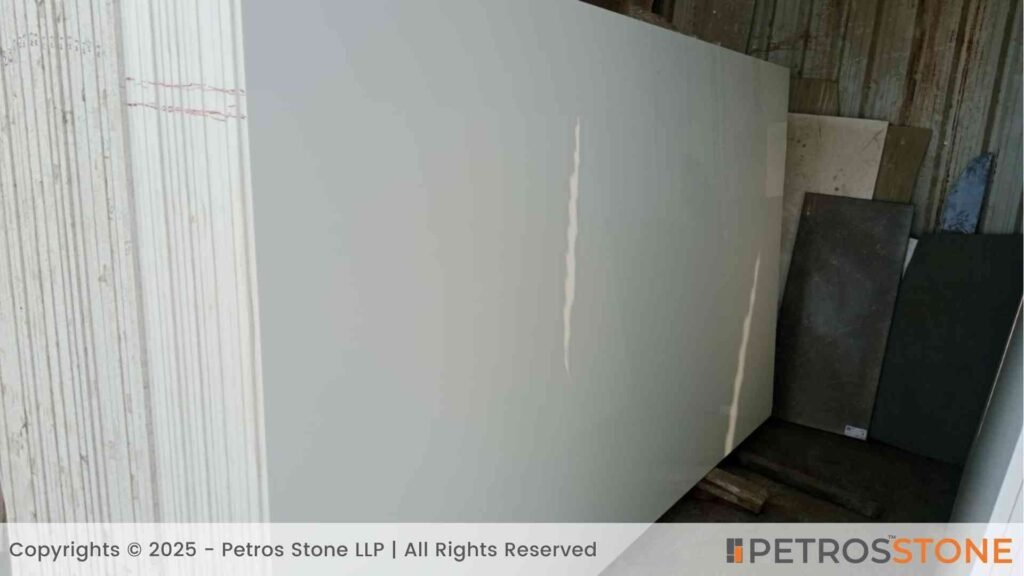
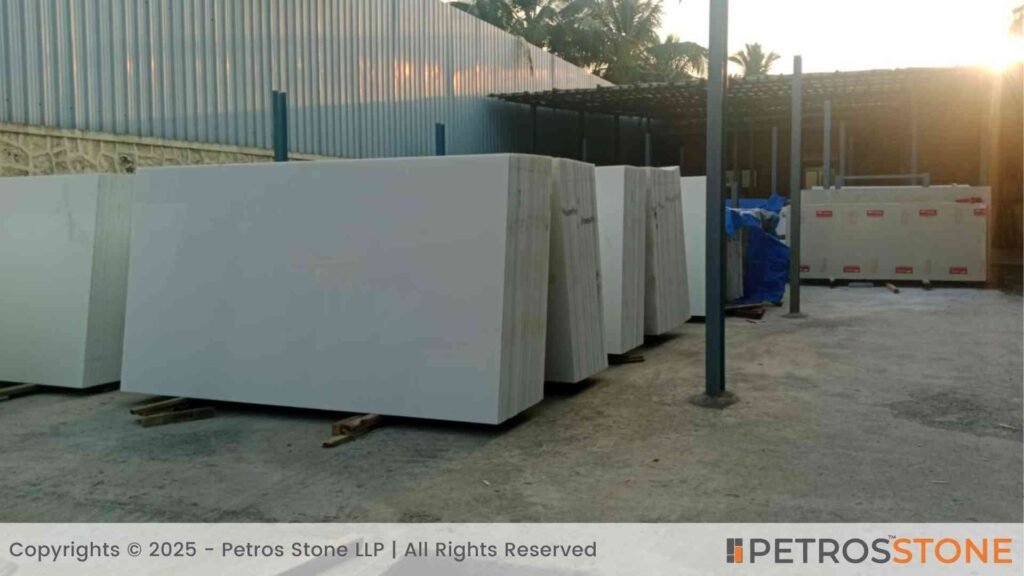
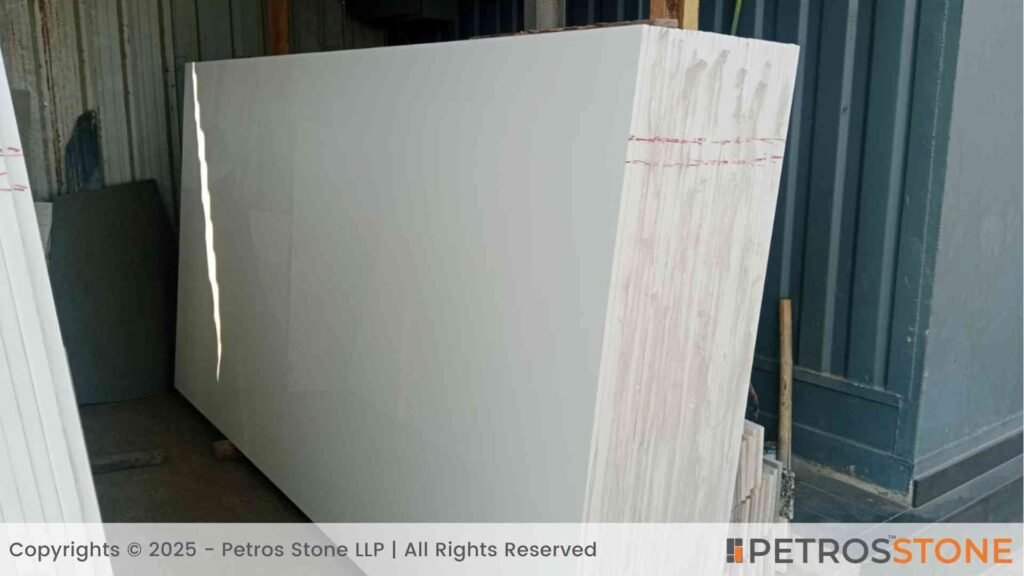
- What is Nano White?
- Is Nano White Marble, Quartz, or Stone?
- How to Check if Nano White is G5, G7 or G9?
- What is Nano White G5, G7 or G9?
- How to Identify G5, G7, and G9 Nano White?
- Does Nano White Come with a Warranty?
- Translucent Properties of G9 Nano White
- Best Nano White Grade for Kitchen Countertops
- How to Prevent Nano White from Cracking
- What is the Thickness of Nano White
- Best Nano White Brands
- Alternatives to Nano White
- Conclusion
What is Nano White?
Nano White, often mistaken for natural stone, is a synthetic material composed of glass, resin, and minerals. It is engineered to mimic the smooth, polished appearance of natural stones like marble, offering enhanced durability and resistance to stains and scratches. Its non-porous surface makes it a hygienic option, particularly for kitchens and bathrooms.
Unlike natural stones, Nano White is uniform in color and texture, free from natural imperfections like veining or fissures. This makes it a low-maintenance alternative with a sleek, modern look.
Is Nano White Marble, Quartz, or Stone?
No, Nano white is neither a natural marble nor quartz or in fact, it’s not even stone. Nano White is a glass with a hazy white shade.
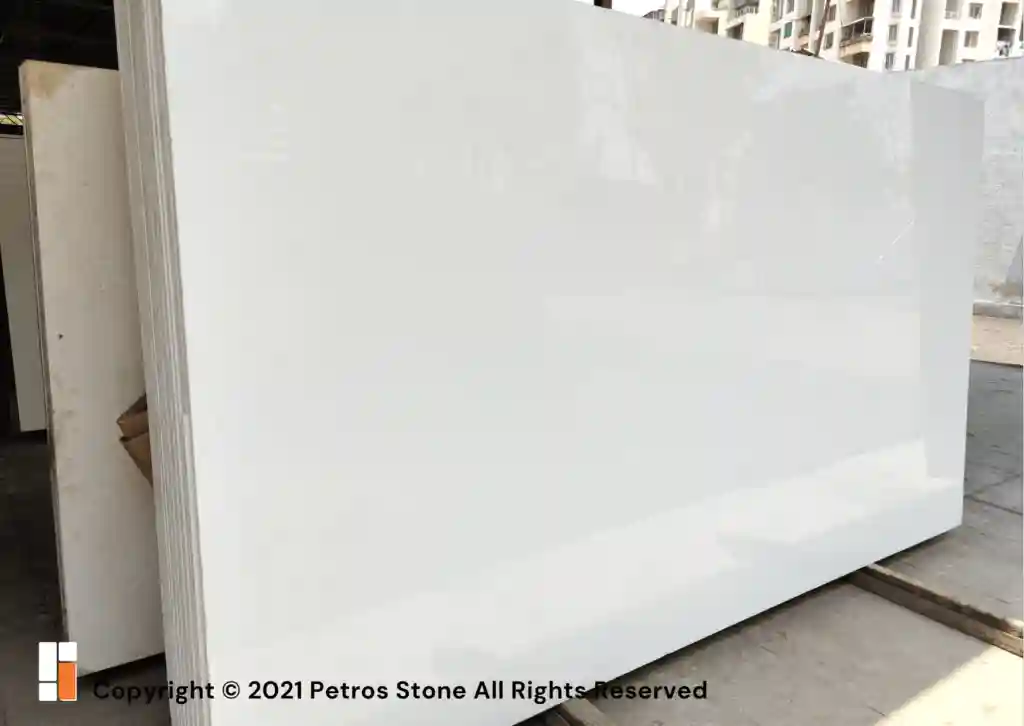
How to Check if Nano White is G5, G7 or G9?
- Visual Inspection: Examine the surface under bright light. G9 will transmit light uniformly, while G5 and G7 will not let light pass through.
- Light Test: Place a flashlight behind the material. The degree of light penetration can help determine the type.
- Defect Check: Presence of black spots, discolorations indicate that Nano white is G5 or G3 and not G7 or G9.
- Texture Check: Run your hand over the surface. G9 feels glass-like and smooth, G7 is slightly less refined, and G5 might have a less even texture.
- Ask for Certification: Reliable suppliers often provide documentation specifying the grade of Nano White.
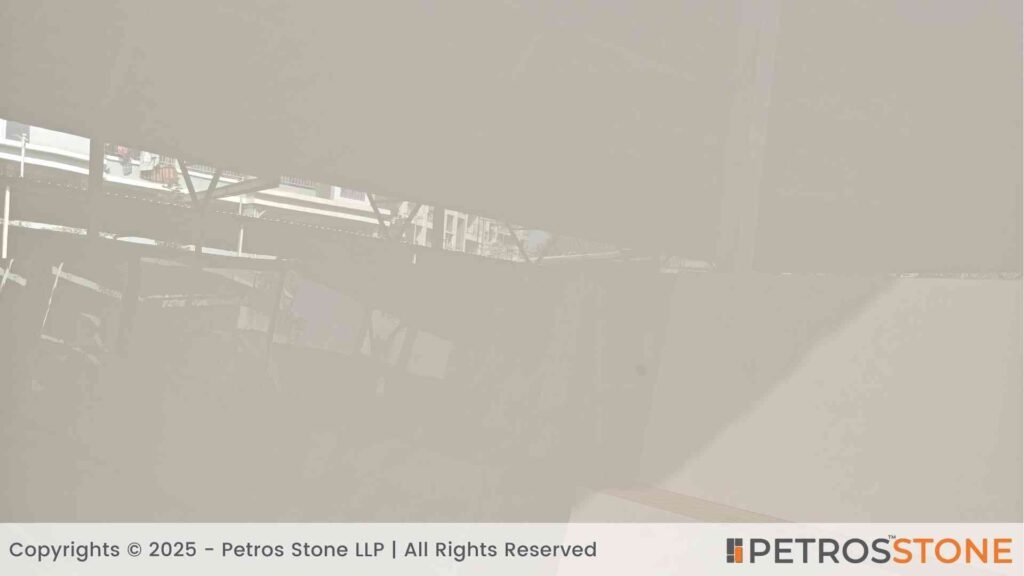
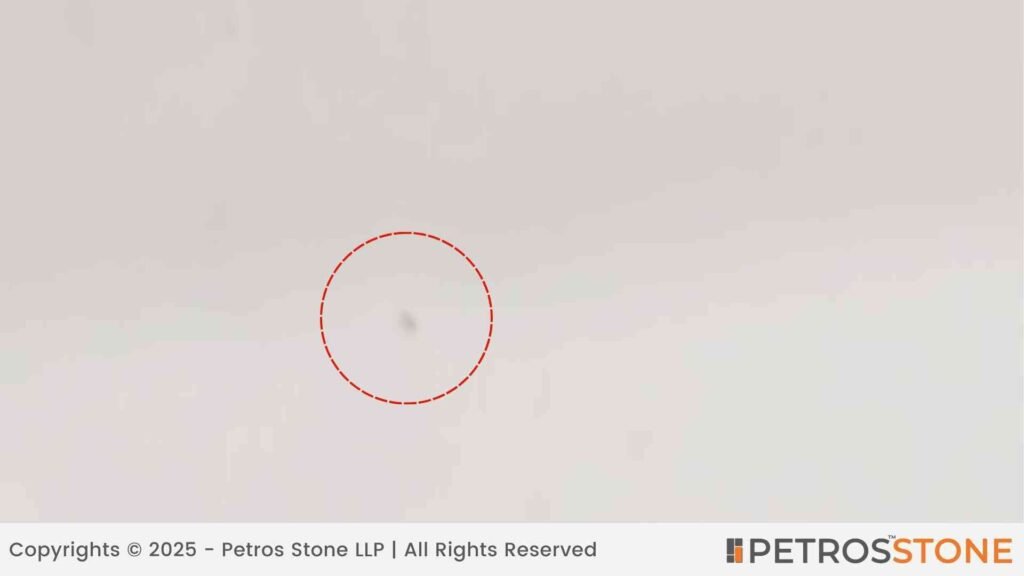
By carefully considering these factors, you can confidently identify whether a Nano White slab is G5, G7, or G9 and select the correct grade for your specific project requirements.
When purchasing Nano White stones, ensuring their authenticity and quality is crucial. While grades such as G5, G7, and G9 primarily denote differences in gloss, whiteness, density, and durability, the presence of a branded mark or certification from recognized brands is essential in confirming their authenticity.
Some reputable brands in the market, such as Petros®, Golden Phoenix®, or other established manufacturers, provide certifications, engraved markings, or labels to validate the quality and authenticity of Nano White stones.

What is Nano White G5, G7 or G9?
Grading in Nano White is based on the material’s quality, finish, and translucency. Similar to the grading systems used for natural stones, Nano White grades such as G5, G7, and G9 denote quality and application suitability differences. Understanding these grades is essential for selecting the right material for your project.
G5 Nano White
- Features: Standard grade with a polished surface.
- Applications: Suitable for bare flooring and wall cladding where aesthetic precision isn’t critical.
- Cost: Most affordable of the three grades.
G7 Nano White
- Features: Mid-tier grade offering better surface finish and durability compared to G5.
- Applications: Ideal for kitchen countertops and high-traffic areas.
- Cost: Slightly higher than G5 but more cost-effective for premium surfaces.
G9 Nano White
- Features: Premium grade with high translucency and impeccable surface finish.
- Applications: Used in decorative applications such as backlit panels or luxury interiors.
- Cost: Most expensive due to its aesthetic and structural qualities.
How to Identify G5, G7, and G9 Nano White?
Identifying the grade of Nano White involves careful observation of various physical and quality attributes. Here are the key factors to examine:

| Parameter | G9 Nano White | G7 Nano White | G5 Nano White |
| Surface Finish | Flawless, highly polished, luxurious. | Smooth, polished, less refined than G9. | Polished, minor inconsistencies. |
| Translucency | High, ideal for backlit panels. | Moderate, unsuitable for backlit use. | Opaque, suited for basic applications. |
| Thickness | Uniform (15-18mm), consistent. | Similar to G9, slight variations. | Varies, may affect durability. |
| Price (₹/sqft) | 420-550 (Certified), 320-380 (Uncertified). | 380-450 (Certified), 300-380 (Uncertified). | 320-380 (Certified), 280-320 (Uncertified). |
| Ease of Cutting | Hard, precise cuts, advanced tools needed. | Moderate difficulty. | Easy, uneven edges, extra polishing. |
| Installation | Complex, skilled labor required. | Moderate skill needed. | Simple, lightweight, easy to install. |
1. Surface Finish
- G9 Nano White: This grade is characterized by its exceptionally smooth and highly polished surface. Its flawless appearance makes it ideal for high-end decorative applications where perfection is critical. The finish reflects light beautifully and creates a luxurious look.
- G7 Nano White: The surface finish of G7 is superior to G5 but slightly less refined than G9. It is smooth and polished but may lack the translucent light quality of G9.
- G5 Nano White: G5 often has minor surface inconsistencies. While still polished and suitable for basic applications, it lacks higher grades’ premium, mirror-like finish.


2. Translucency
- G9 Nano White: Known for its high translucency, this grade allows significant light penetration. When a light source is placed behind it, G9 emits a luminous glow, making it ideal for backlit panels and decorative walls.
- G7 Nano White: G7 has moderate translucency, allowing some light to pass through but not as much as G9. It is not typically used for backlit applications but is perfect for surfaces where translucency isn’t essential.
- G5 Nano White: G5 has the least translucency of the three grades. It is opaque and better suited for flooring, countertops, or areas where light penetration is not a priority.
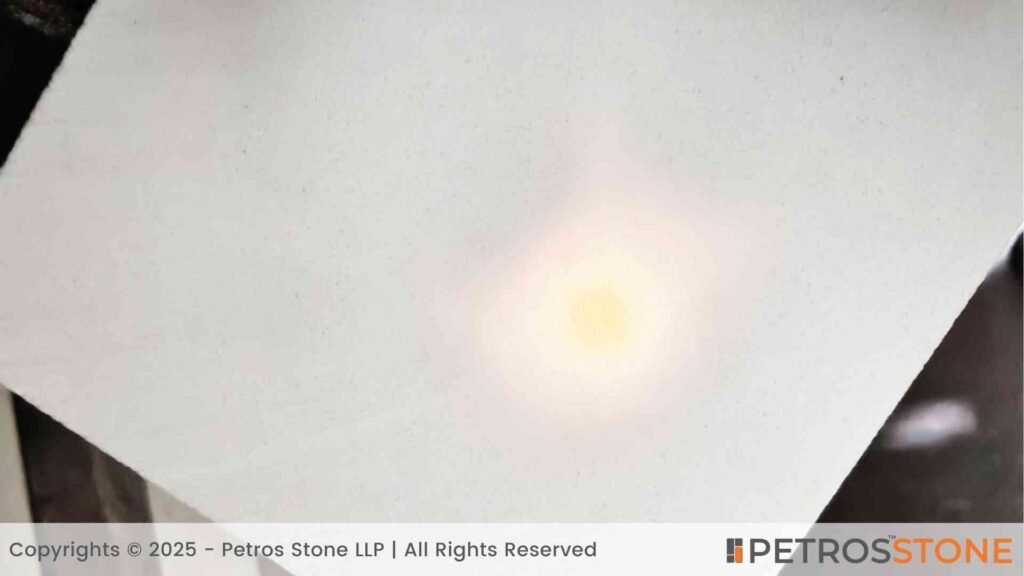
3. Thickness
- G9 Nano White: Often available in uniform thicknesses ranging from 15mm to 18mm, G9 provides a consistent structure suitable for high-end installations.
- G7 Nano White: Typically offered in similar thicknesses as G9 but may occasionally vary slightly depending on the supplier.
- G5 Nano White: Thickness may vary more in G5 due to its lower-grade manufacturing process. This can affect its durability and suitability for specific applications.
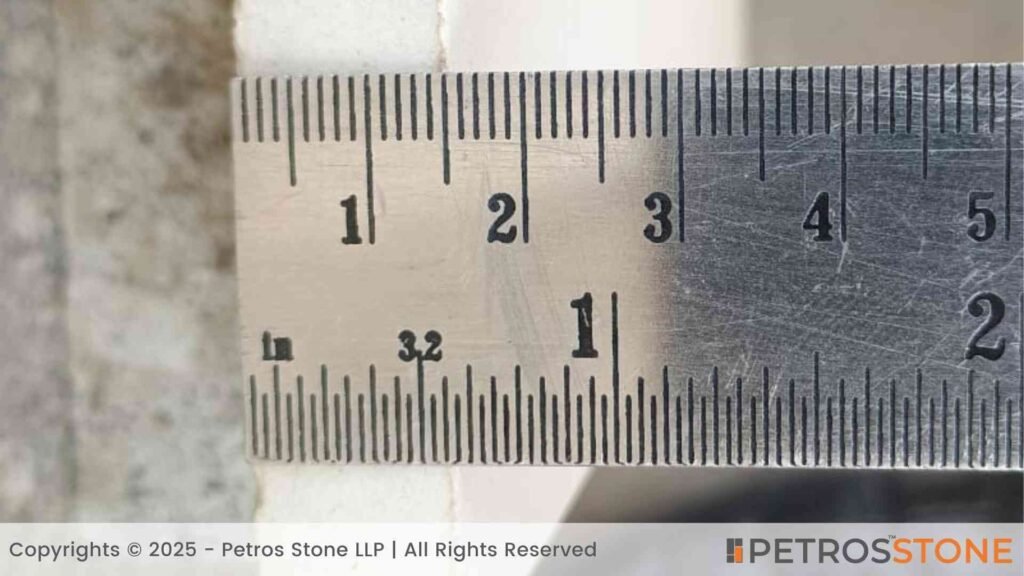
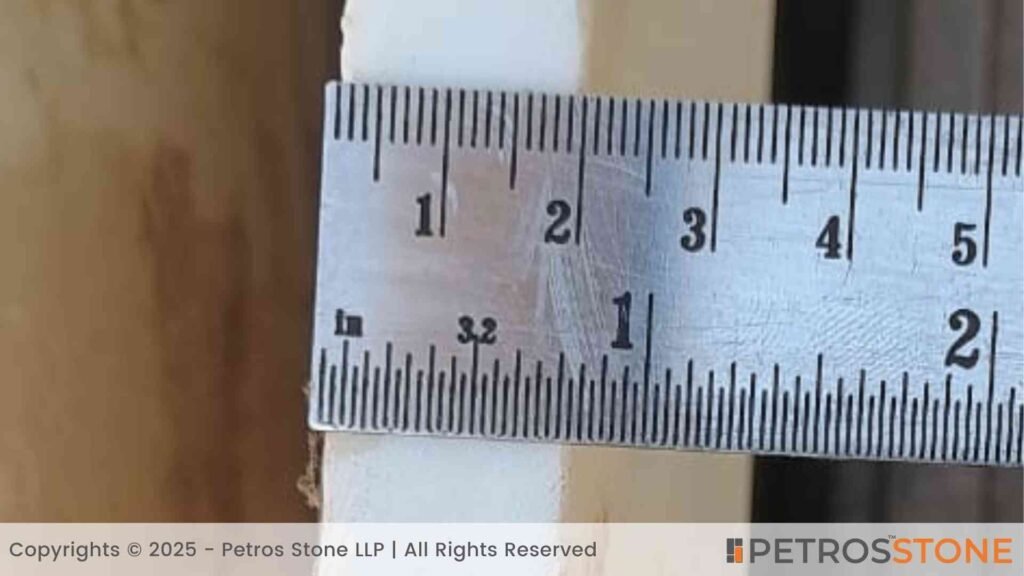
4. Price
- G9 Nano White:
₹420-550/sqft (Certified Slab)
₹320-₹380/sqft (Uncertified Slab)
The premium grade G9 is significantly more expensive than G5 and G7 due to its impeccable surface finish, high translucency, and superior overall quality. It is often used in luxury projects where aesthetics are paramount. - G7 Nano White:
₹380-450/sqft (Certified Slab)
₹300-₹380/sqft (Uncertified Slab)
G7 falls in the mid-price range, balancing cost and quality. It is a popular choice for residential and commercial applications. - G5 Nano White:
₹320-380/sqft (Certified Slab)
₹280-₹320/sqft (Uncertified Slab)
The most affordable option, G5 is cost-effective for basic applications like flooring or walls but may not provide the high-end appearance of G7 or G9.

5. Ease of Cutting and Processing – Nano White G5, G7 and G9
- G5: Easier to cut due to its lower hardness but may lead to uneven edges and require more polishing.
- G7: Difficult to cut compared to G5.
- G9: Requires advanced tools and more effort due to its high hardness but ensures precise cuts and smooth edges.
6. Installation Complexity
- G5: Easier to install due to its lower weight and easier handling, making it suitable for simple applications.
- G7: Requires moderate skill and precision for installation, balancing ease and aesthetics.
- G9: Demands highly skilled labor for flawless installation due to its premium quality and heavier weight.
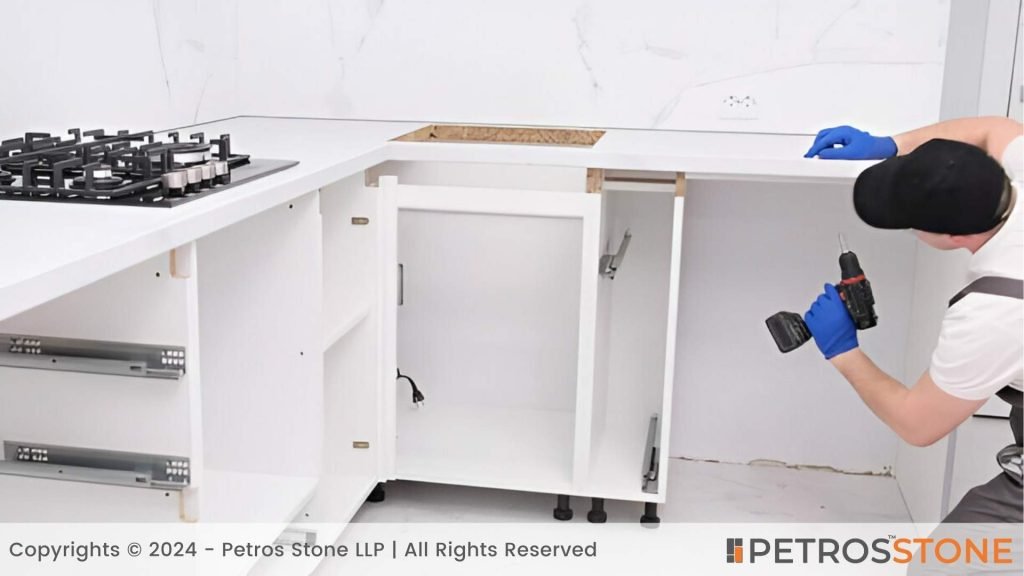
Does Nano White Come with a Warranty?
Many manufacturers offer warranties on Nano White, typically ranging from 5 to 15 years. Warranties often cover issues like manufacturing defects but may exclude damage caused by improper installation or heavy impact.
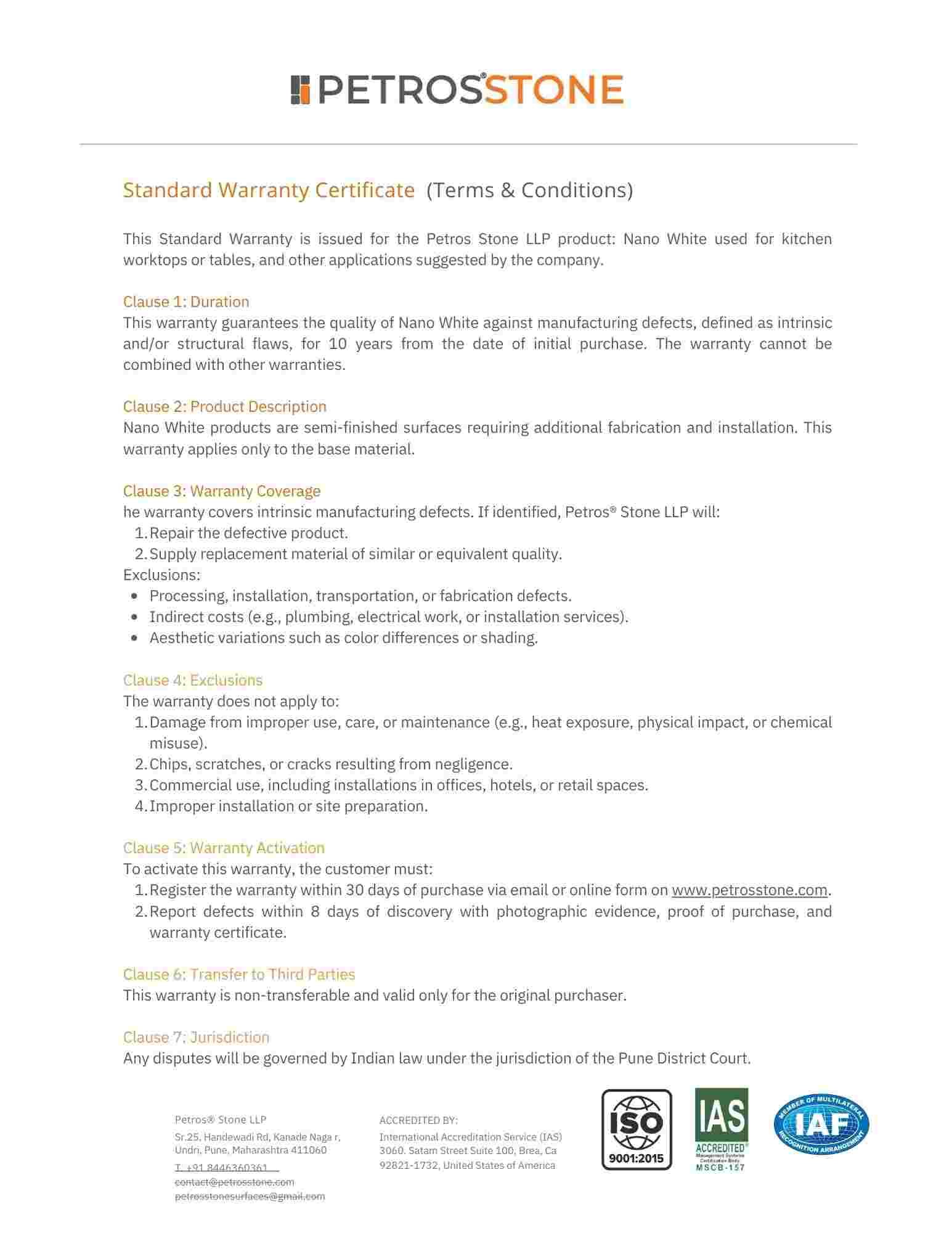
Translucent Properties of G9 Nano White
G9 Nano White is prized for its translucent quality, which allows light to pass through, making it a popular choice for backlit applications. Designers often use G9 for accent walls, vanity tops, and decorative panels where a luminous effect is desired.
Best Nano White Grade for Kitchen Countertops
When choosing the correct Nano White grade for kitchen countertops, G5 and G7 are the best choices. While all grades of Nano White offer durability and a sleek appearance, G9’s translucent properties make it less ideal for kitchen applications. Here’s a deeper explanation:
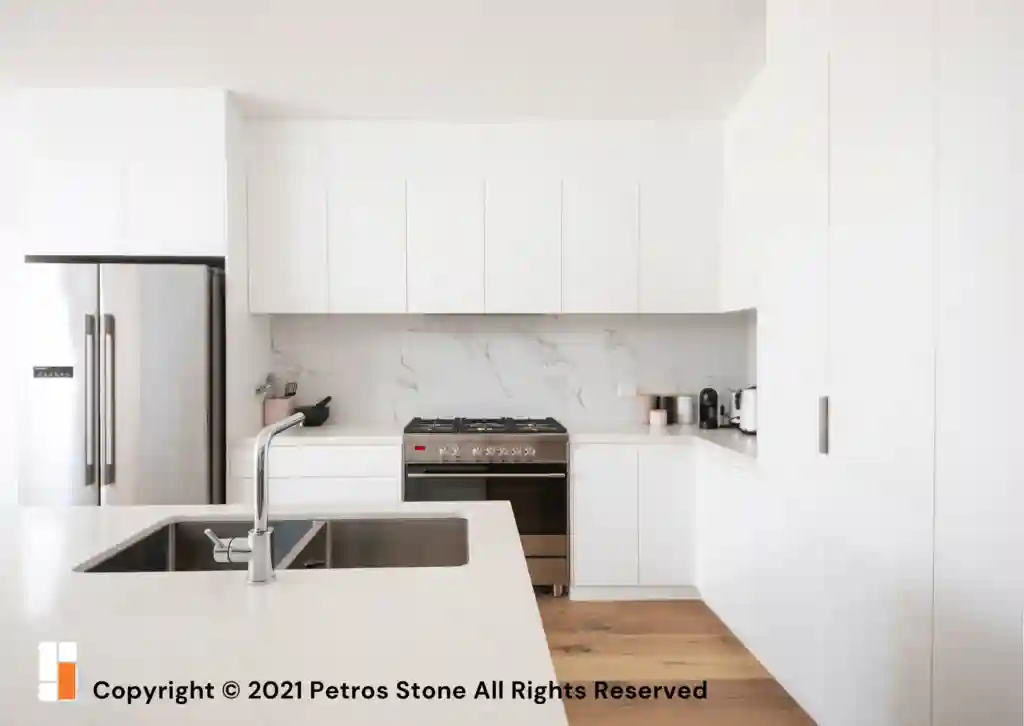
Why G5 and G7 Are Better Choices
G5 and G7 can withstand the heat typically encountered in kitchen settings, such as hot pans or appliances, without cracking or discoloring.
Is Nano White Good for Kitchen Countertops
Unfortunately, while it has an appealing white glossy sheen and offers good heat and stain resistance, it is not an ideal material for kitchen countertops due to its brittle nature. It is more prone to breakage, making it less suitable, especially for Indian kitchens. A heavy impact, such as a utensil falling from a height, can damage the surface, compromising its durability.
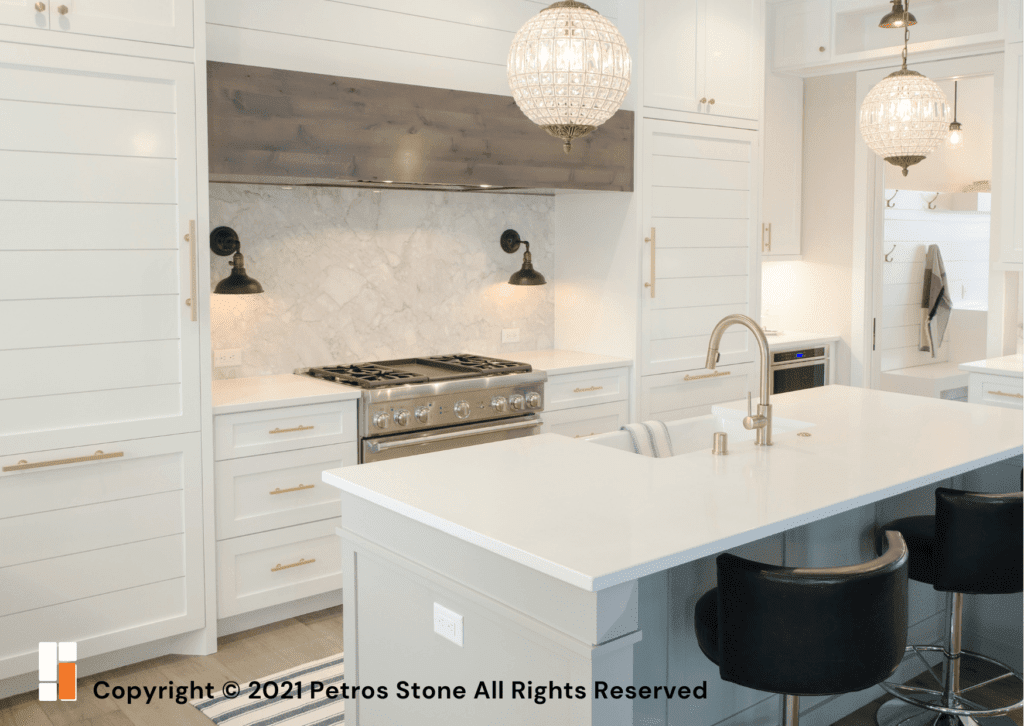
However, if you still want to go for Nano White- then both G5 and G7 are good choices. However, G5 must be preferred as it is cost-effective and has no defects. Likewise, the G7 has no defects but is more expensive. Thus, most of the time, it is not worth your money. Additionally, you will not get G3 nano white in the market as it is out of production these days.
How to Prevent Nano White from Cracking
To prevent cracking, follow these steps:
- Regular Maintenance: Clean with mild soap and water; avoid harsh chemicals that may weaken the surface.
- Proper Installation: Ensure professional installation with the right adhesives and techniques.
- Cut the stone from the reverse side with use of mud and sand supports.
- Avoid Heavy Impact: Although durable, Nano White can crack under extreme force.
- Uniform Support: Provide even support beneath the slabs to prevent stress points.
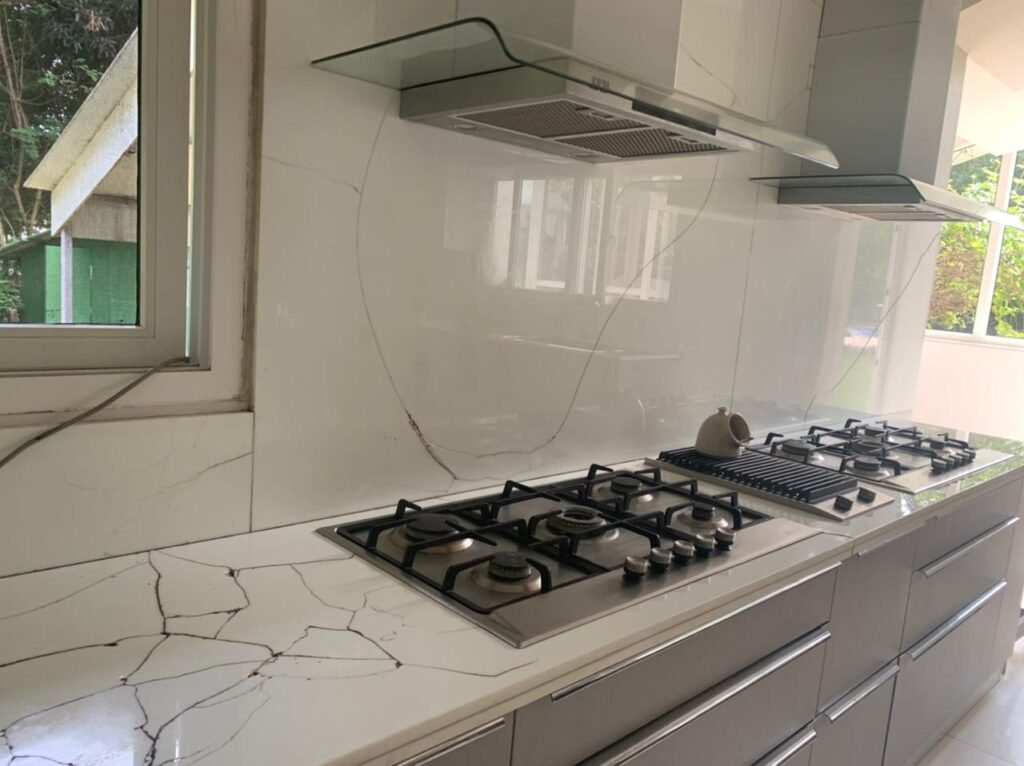
What is the Thickness of Nano White
Nano White slabs typically come in 18mm to 20mm thicknesses, suitable for various applications. Thicker slabs are more durable and less prone to cracking, making them ideal for countertops and flooring.
Best Nano White Brands
When selecting Nano White for your project, choosing a reputable brand ensures premium quality, durability, and long-lasting performance. Two highly regarded brands in the Nano White industry are Petros® and Petros® Phoenix These brands are the top choices for architects, designers, and homeowners alike.
1. Petros®
Reputation
- Petros® is renowned for its consistent quality and innovative production techniques.
- Widely trusted in both residential and commercial projects for delivering premium materials.
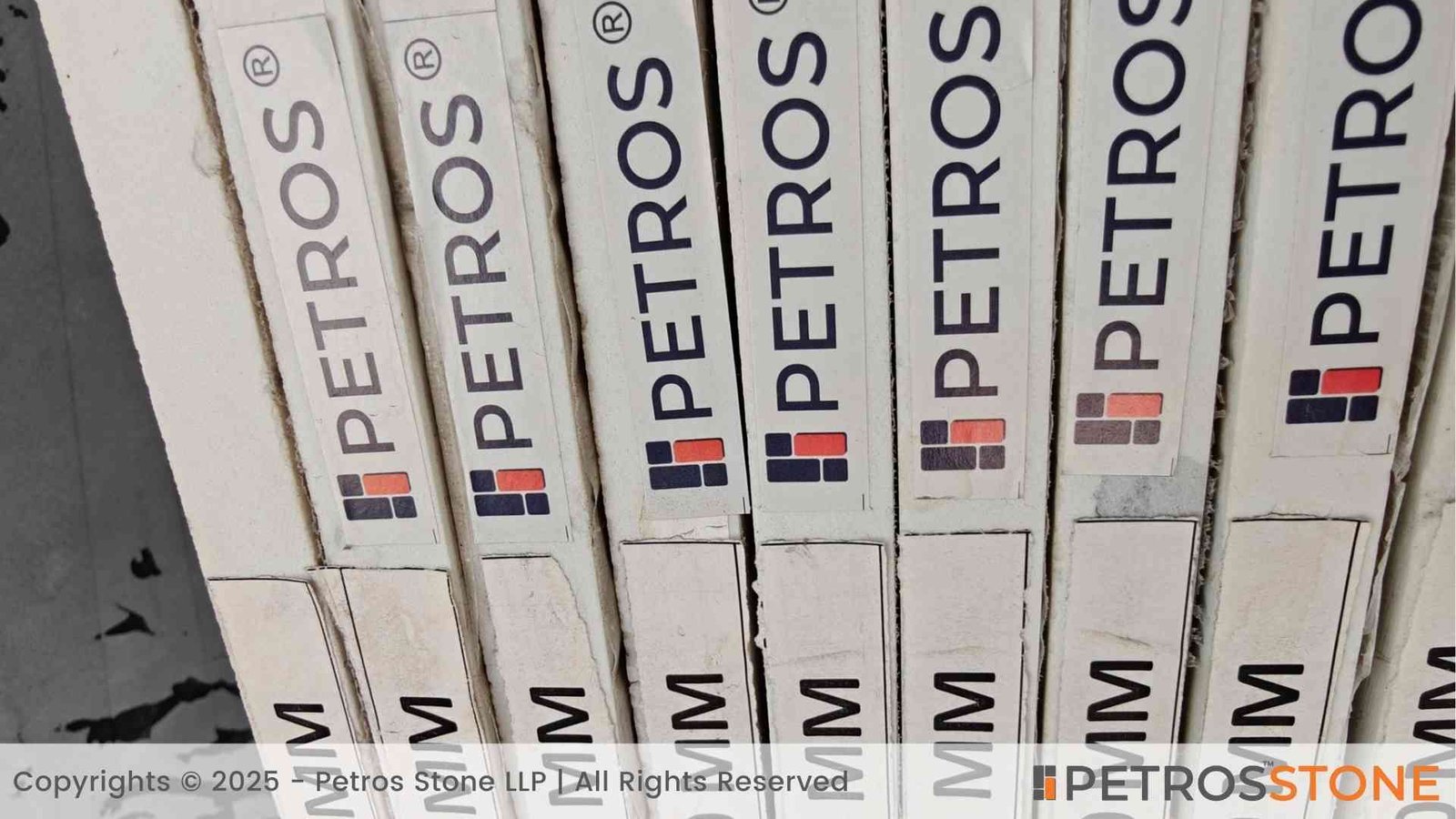
Features
- Purity: Offers a pristine white surface with no discoloration or inconsistencies.
- Durability: High-density material that is resistant to scratches, stains, and moisture.
- Finish: Mirror-like gloss that enhances modern and luxurious interiors.
- Ease of Installation: Available in various grades (G5, G7, G9) to suit different cutting and processing needs.
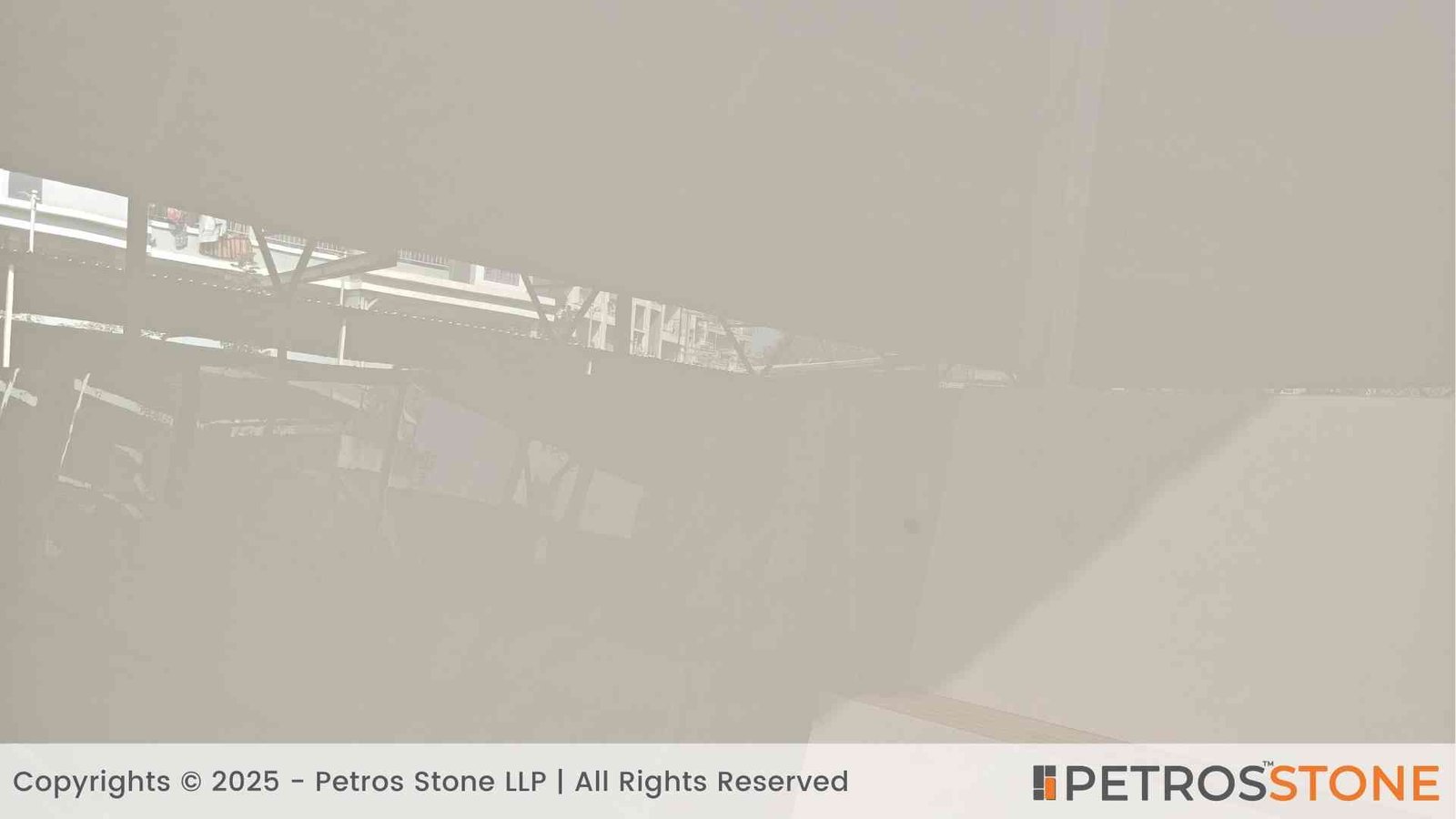
Why Choose Petros®?
- Certified for quality assurance, ensuring you get authentic Nano White.
- Ideal for high-end projects where perfection and durability are a priority.
- Offers a wide range of sizes and grades, catering to diverse design requirements.
Key Factors to Consider When Choosing a Brand
- Quality Assurance: Opt for brands with a proven track record of delivering consistent quality. Certifications or product warranties can be a good indicator of reliability.
- Variety: Look for brands offering multiple grades (G5, G7, G9) to match your specific project requirements.
- Customer Service: Brands that provide prompt support, guidance on product selection, and after-sales service ensure a hassle-free experience.
- Pricing: While premium brands may come at a higher cost, they often deliver superior value in terms of durability and aesthetics.
Where to Buy Nano White
You can purchase Nano White from:
- Always opt for a reliable supplier to ensure you receive genuine, high-grade Nano White.
- Local stone suppliers.
- Authorized dealers of premium brands.
- Online marketplaces offering verified sellers.
Alternatives to Nano White
If Nano White doesn’t suit your requirements, consider these alternatives:
- Quartz: Durable and available in a variety of colors and patterns.
- Marble: Offers natural beauty with veining, though it requires more maintenance.
- Granite: Known for its strength and versatility in design.
- Solid Surfaces: Man-made materials like Corian provide seamless finishes and high customizability.
Conclusion
Remember that even though Nano white may not be the best material for countertops, it is still suitable for a variety of other applications.
Choosing the correct grade of Nano White—G5, G7, or G9—depends on your needs, budget, and aesthetic preferences. While G9 stands out for its premium translucent properties, G5 and G7 are more practical for functional surfaces like kitchen countertops.
Feel free to get in touch for a free consultation, quote, and get a detailed understanding from our experts here at Petros®. Visit https://petrosstone.com/ or call +91-8446360361 and WhatsApp

Hi, I’m Khushbu,
With years of experience in the field of architecture, I’ve developed a deep appreciation for the impact of natural materials in design. At Petros® Stone, I write to share my perspective on how stone can modernize spaces with beauty, function, and timelessness.
Brown Granite
White Galaxy Granite
Blue Bahia Granite
Silver Cloud Granite
Black Pearl Granite
Dallas White Granite


